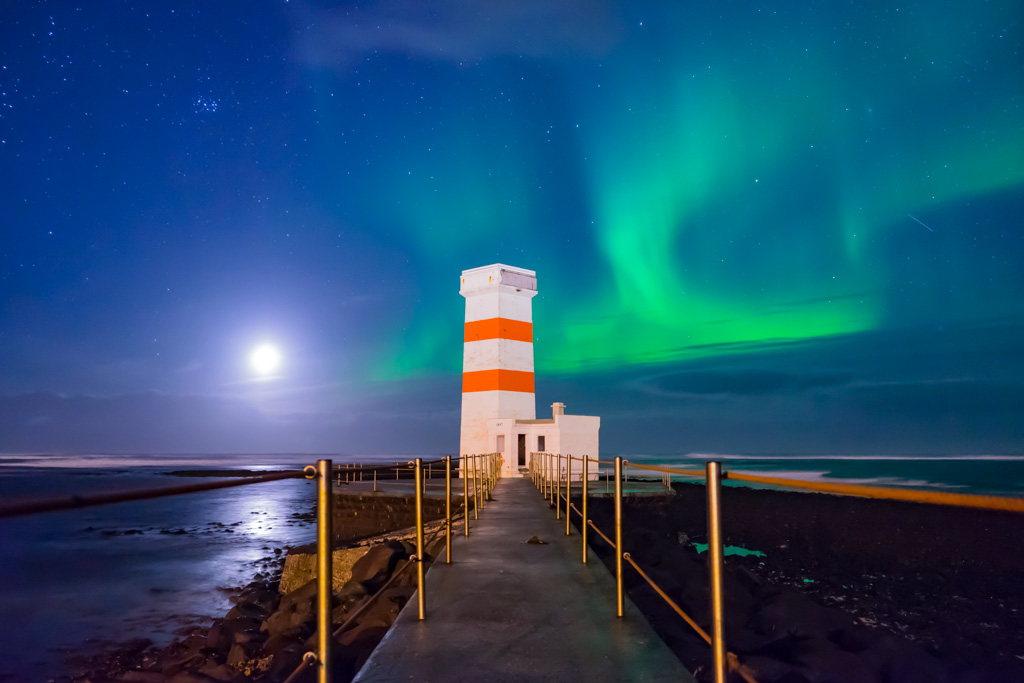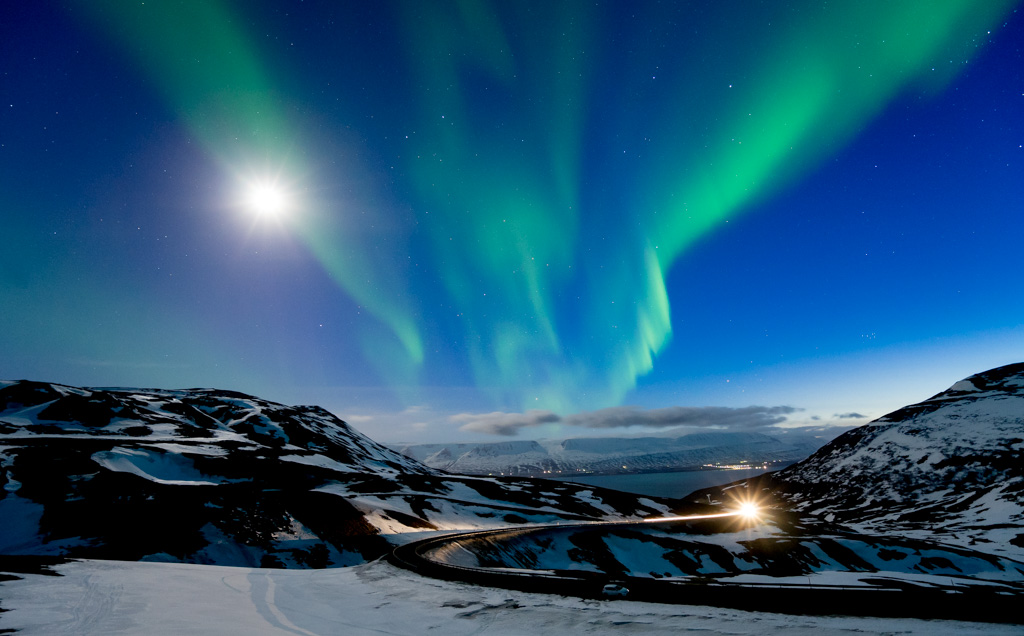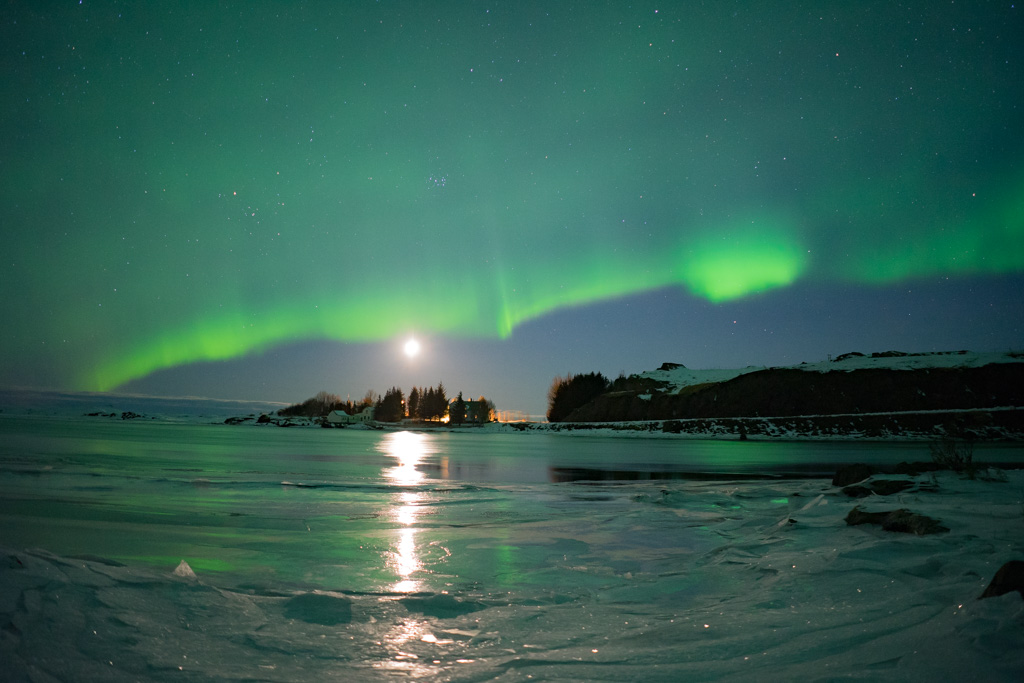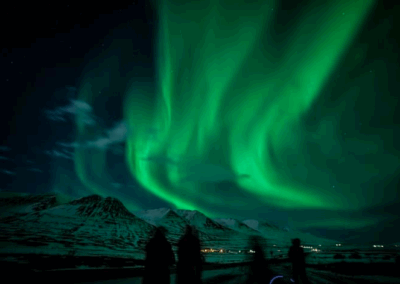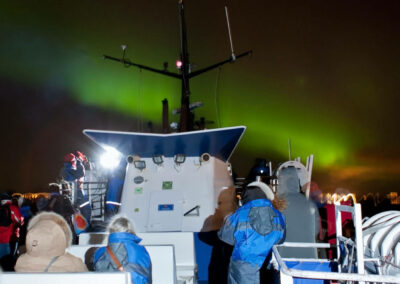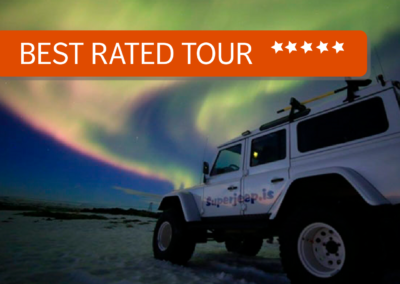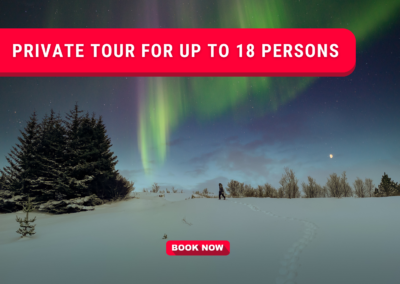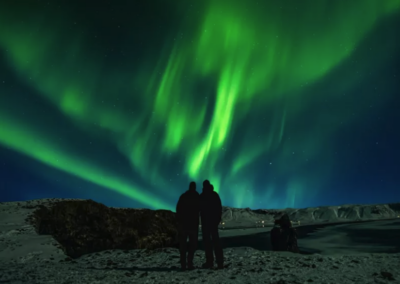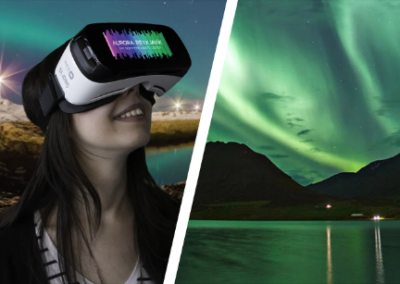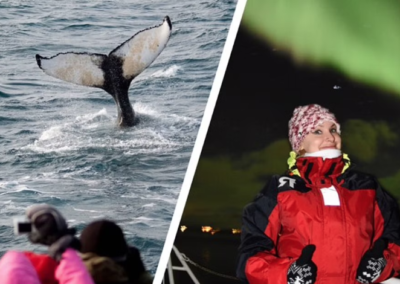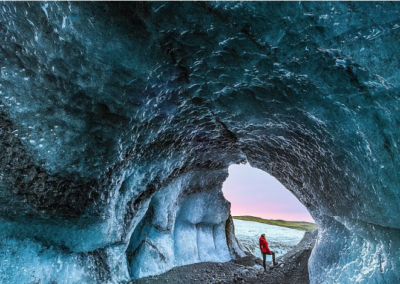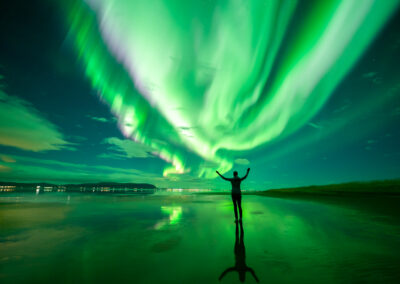Help! It’s full moon! Will it ruin my aurora experience?

Imagine this: You’ve just arrived in the subarctic region, positioned perfectly under the auroral oval. The conditions are looking great—long dark nights, solar activity is up, and clear skies are ahead. You’re all set for the ultimate Northern Lights experience! But then… uh-oh… you notice the full moon glowing brightly in the night sky. Could this bright lunar companion ruin your dream of seeing the aurora borealis?
Spoiler alert: Not at all! In fact, as seasoned aurora photographers and filmmakers, we embrace the full moon. For us, these nights are some of the best times to capture the Northern Lights. Let us tell you why.
written by Katarina Raker, Aurora Reykjavik
Full moon aurora at Þingvellir National Park, Iceland
Does the Full Moon Affect the Northern Lights?
First things first—the moon has no impact on the Northern Lights themselves.
The aurora borealis is caused by solar activity, specifically when charged particles from the Sun collide with Earth’s magnetic field and excite gases in the atmosphere. This creates those iconic dancing lights. The moon, no matter how bright or full, doesn’t influence solar winds or geomagnetic storms.
That said, the full moon does add light to the night sky, which can make it harder for untrained eyes to spot faint auroras. But here’s the good news: if the aurora activity is moderate to strong, you can still enjoy a spectacular display even under a full moon.
Full Moon – It all depends on the strength of the aurora
That being said, as every stargazer knows, a full moon does cast a lot of light in the sky. And yes, for untrained eyes, it does make it harder to see the aurora, just as bright moonlight can drown faint stars from our view.
However, it all depends on how strong the display is that you are witnessing. A weak aurora might be drowned in bright moonlight, but if you get a moderate to a high level of solar activity, you will still get a good view of the northern lights. Contrary to what you might have heard, it is possible to see the aurora borealis, or northern lights, when there’s a bright moon, even a full moon, in the sky.

Full moon aurora in the highlands, Iceland

Full moon aurora in the East Fjords, Iceland
Why We Love the Full Moon for Aurora Chasing
Scroll through our gallery, and you will easily spot the answer in our photos:
Many might think of moonlight as an obstacle, but for photographers and aurora enthusiasts, it brings some unique advantages. Here’s why we love full moon nights for Northern Lights hunting:
1. Moonlight Enhances the Landscape
The moon softly illuminates the foreground, creating a magical setting. Snow-covered mountains, lava fields, and Icelandic glaciers appear even more stunning under moonlight.
2. Beautifully Colored Skies
Instead of pitch black, the night sky appears in deep, rich blue hues—a striking backdrop for the aurora
3. Better Aurora Portraits
The moonlight adds just enough light to softly illuminate people in photos, avoiding the silhouette effect while maintaining the natural beauty of the aurora.
4. Shorter Shutter Speeds
Moonlight allows for shorter exposure times, making it easier to capture sharp images of people and realistic time-lapses that mimic real-time aurora movements.
5. Crisper Aurora Shapes
Shorter shutter speeds also capture the intricate shapes and patterns of the aurora with more clarity
6. Safer and More Enjoyable Conditions
Navigating Icelandic landscapes in the dark can be tricky. With a full moon, it’s easier to see your surroundings and avoid potential hazards like hidden lava caves or icy trails.
In conclusion: If you want to enhance your chances to witness the northern lights with your bare eyes, try to avoid any lunar light. If you aim at taking a great shot, join us when the moon is out.
So, if you can – buy the ticket, get the ride. You will find our hand-picked selection of tours here:

Full moon aurora at Kerlingarfjöll, Iceland
Should You Avoid Full Moon Nights?
If your main goal is to see the Northern Lights with your own eyes, avoiding moonlit nights might improve visibility of faint displays. However, if you’re aiming for stunning aurora photographs or want a magical overall experience, full moon nights offer unique opportunities.
Pro tip: Track the aurora forecast and cloud cover on reliable apps, like the ones mentioned in our guide to NorthernLights apps, to plan your chase effectively.
Capture the Aurora with Us
At Aurora Reykjavík, we know how to make the most of every lunar phase. Whether it’s a moonlit night or a moonless one, our expert guides will help you chase the aurora under the best conditions. Plus, our team of photographers will ensure you go home with breathtaking photos.
Check out our hand-picked selection of Northern Lights tours and let us take you on an unforgettable adventure. Remember, the magic of the aurora doesn’t fade under the full moon—it shines brighter in new ways.

Full moon aurora at Þingvellir National Park
Explore More at Aurora Reykjavík
- Visit our Northern Lights Center to learn everything about the aurora.
- Discover the best Northern Lights photography tips for your next adventure.
- Find out the best months to see the aurora borealis in our guide.
So, if you can – buy the ticket, get the ride. You will find our hand-picked selection of tours here:
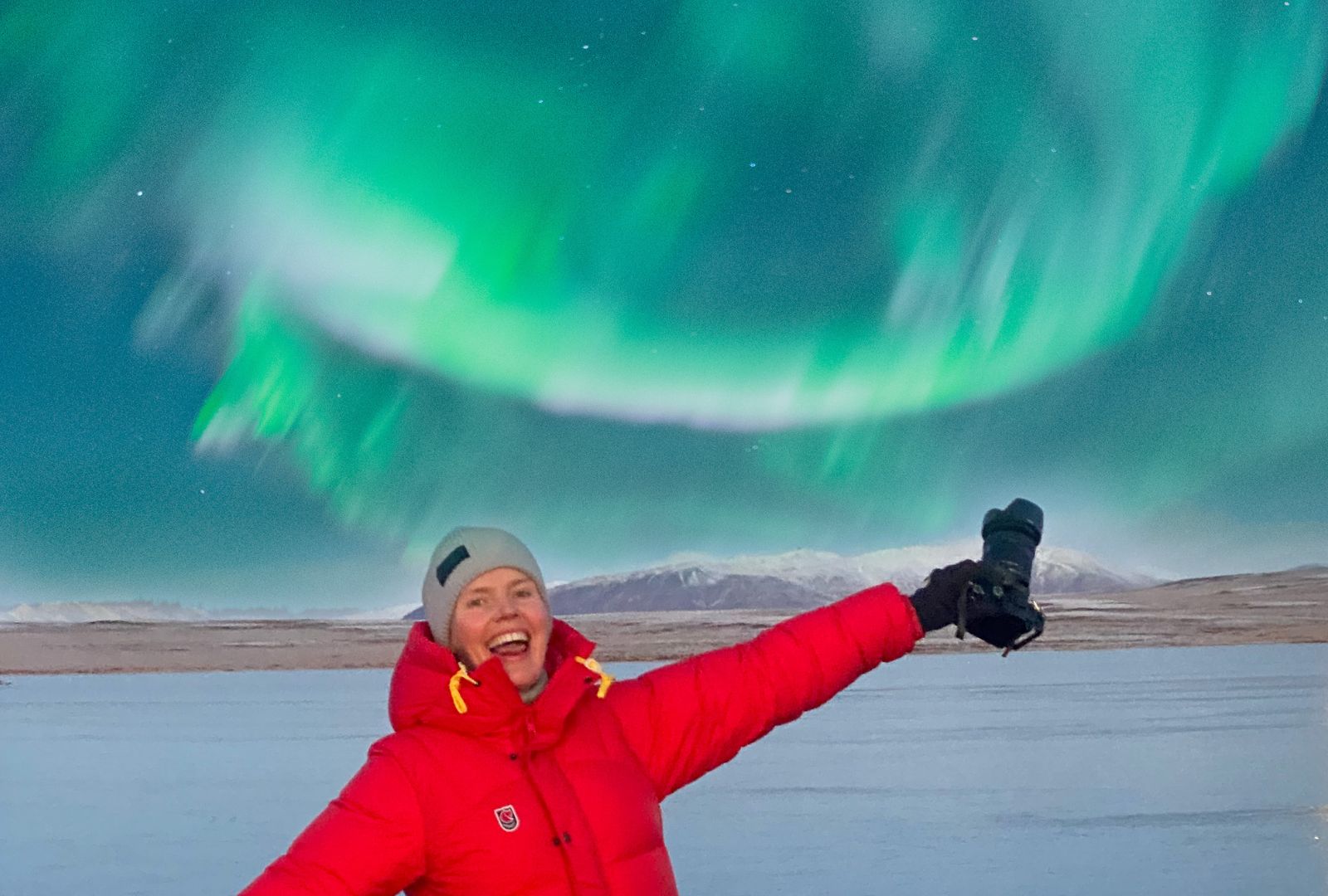
Katarina Raker
About the Author: Katarina Raker
Katarina Raker is a passionate Northern Lights expert and award-winning photographer based in Iceland. With years of experience chasing the aurora across the Arctic, she combines her love for storytelling with a deep knowledge of the science behind the Northern Lights. As a team member at Aurora Reykjavík, Katarina is dedicated to helping travelers experience the magic of the aurora borealis through expert tips, guided tours, and stunning photography. When she’s not capturing the sky’s most dazzling displays, Katarina enjoys exploring Iceland’s breathtaking landscapes and sharing her adventures with the world.



